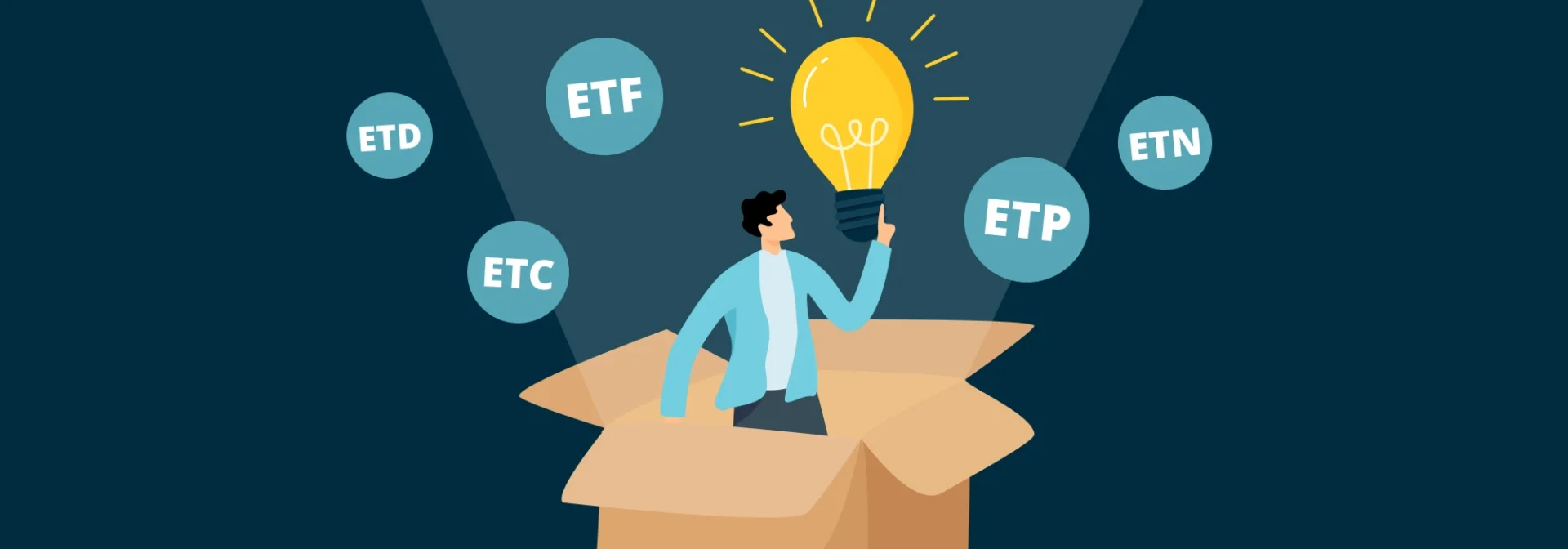Exploring Exchange-Traded Products (ETPs) and Their Various forms: ETFs, ETNs and ETCs

Exchange-Traded Products (ETPs) are a type of investment that allows individuals to invest in a variety of assets through a single security. They are traded on major stock exchanges, providing investors with easy access to diverse asset classes such as stocks, bonds, commodities, and cryptocurrencies.
What is an ETP?
An ETP is essentially a broad term for securities traded on exchanges. This includes ETCs (Exchange-Traded Commodities), ETNs (Exchange-Traded Notes), and ETFs (Exchange-Traded Funds). However, not everyone in the financial industry uses the term ETP consistently.
Most important types of ETPs
Exchange-Traded Funds (ETFs)
ETFs stand out as the quintessential ETP, designed to mirror the performance of specific indices, such as the S&P 500, or to focus on targeted sectors, industries, or themes. These funds offer the flexibility of intraday trading, allowing investors to buy and sell shares on the stock exchange similarly to individual stocks.
Key advantages of ETFs include their trading convenience, broad diversification, and transparency, with daily disclosure of holdings. Moreover, ETFs are generally more cost-effective than actively managed mutual funds and provide additional security against the insolvency of the managing company. Investors should note, however, that losses can occur within the normal market risk of the investment.
Exchange-Traded Notes (ETNs)
ETNs are essentially debt securities issued by financial institutions, designed to track the performance of a referenced asset or index, minus any fees.
Unlike ETFs, ETNs don’t own any physical assets but rather represent a bond-like debt obligation, exposing investors to the credit risk of the issuer. This distinction introduces additional risks, such as tracking errors and early redemption concerns. It’s important to note that ETNs do not offer insolvency protection, highlighting their bond-like nature.
Exchange-Traded Commodities (ETCs)
ETCs allow for investment in physical commodities (e.g., gold, silver, oil, agricultural goods) without the need for direct, physical ownership. These instruments can be structured as trusts or funds holding the actual commodities or futures contracts.
ETCs provide a convenient way for investors to participate in the price movements of commodities without directly investing in physical commodities. However, like ETNs, ETCs are subject to issuer credit risk.
By understanding the different types of ETPs available on the market, investors can tailor their investment strategies to meet their financial goals while effectively managing risks. Whether seeking exposure to specific sectors, commodities, or asset classes, ETPs offer a convenient and efficient means to access global markets and build well-diversified portfolios, though these are naturally prone to market fluctuations. At BISON, we offer numerous ETFs, ETN and ETCs.
Sources
CoinShares (2022) “Different Types of ETPs: ETF, ETN, ETC” [Online]. Available at: https://etp.coinshares.com/knowledge/investment-resources/different-types-of-etps-etf-etn-etc [last accessed on February 14, 2024].
Investopedia “Exchange-Traded Products (ETP)” [Online]. Available at: https://www.investopedia.com/terms/e/exchange-traded-products-etp.asp [last accessed on February 14, 2024].
Skilling “Exchange-Traded Products (ETP)” [Online]. Available at: https://skilling.com/row/en/blog/trading-terms/exchange-traded-products-etp/ [last accessed on February 14, 2024].
Börse Stuttgart “Exchange-Traded Products (ETPs)” Börse Stuttgart [Online]. Available at: https://www.boerse-stuttgart.de/de-de/produkte/etps/ [last accessed on January 25, 2024].
Disclaimer
The content of this article is for informational purposes only and does not constitute financial, investment, and/or trading advice. We strongly recommend that you conduct the necessary research before making an investment, and/or trading decision. Please note that past performance does not guarantee future results.
Liability of the Börse Stuttgart Group and its subsidiaries for the article is excluded.